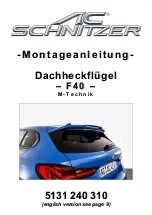
Saving fuel and helping the environment
¤
Introduction
In this section you’ll find information about:
Efficient driving style
Fuel-efficient driving
Fuel consumption, environmental impact, and wear and tear on engine, brakes and tires depend
mainly on the following 3 factors:
x
Your personal driving style.
x
External conditions (weather, road conditions).
x
Technical requirements.
You can reduce fuel consumption by up to 25% by using a few simple techniques and adjusting your
driving style.
WARNING
Always adjust your speed and the distance you keep between you and the vehicles ahead of
you to the road, traffic, weather, and visibility conditions.
Efficient driving style
¤
Please first read and note the introductory information and heed the WARNINGS
Shifting faster
As a rule, the following applies: The higher gear is always the most efficient gear. The rule of thumb
for most vehicles is to drive in 3rd gear at 20 mph (30 km/h), 4th gear at 25 mph (40 km/h), 5th gear at
30 mph (50 km/h), and 6th gear at 36 mph (60 km/h).
If traffic and driving conditions permit, “skipping” gears when upshifting also saves fuel.
Do not run the gears up to their limit. Use 1st gear only to start moving and then smoothly shift into
2nd gear. Avoid kick-downs in vehicles with automatic transmissions.
Coasting
If you take your foot off the accelerator, fuel delivery to the engine is interrupted, which lowers fuel
consumption.
Therefore, when nearing a red stop light, for instance, allow the vehicle to coast without using the
accelerator. The engine will then continue to run at idle.
In situations where the vehicle will be stopped for a longer period of time, such as at a railroad
crossing, physically switch off the engine.
Defensive driving and “flowing” with traffic
Frequent braking and acceleration increase fuel consumption significantly. Just by driving defensively
and keeping a sufficiently large distance away from the vehicle in front of you can make up for the
speed fluctuations caused by taking your foot off the accelerator. Active braking and accelerating is
then not necessarily required.
















































